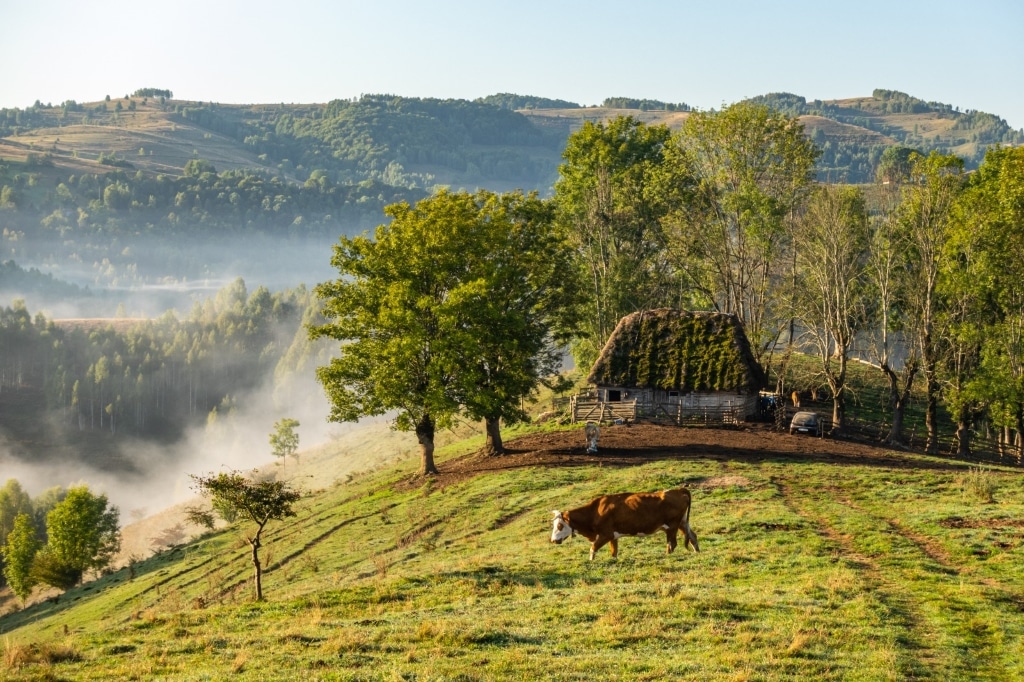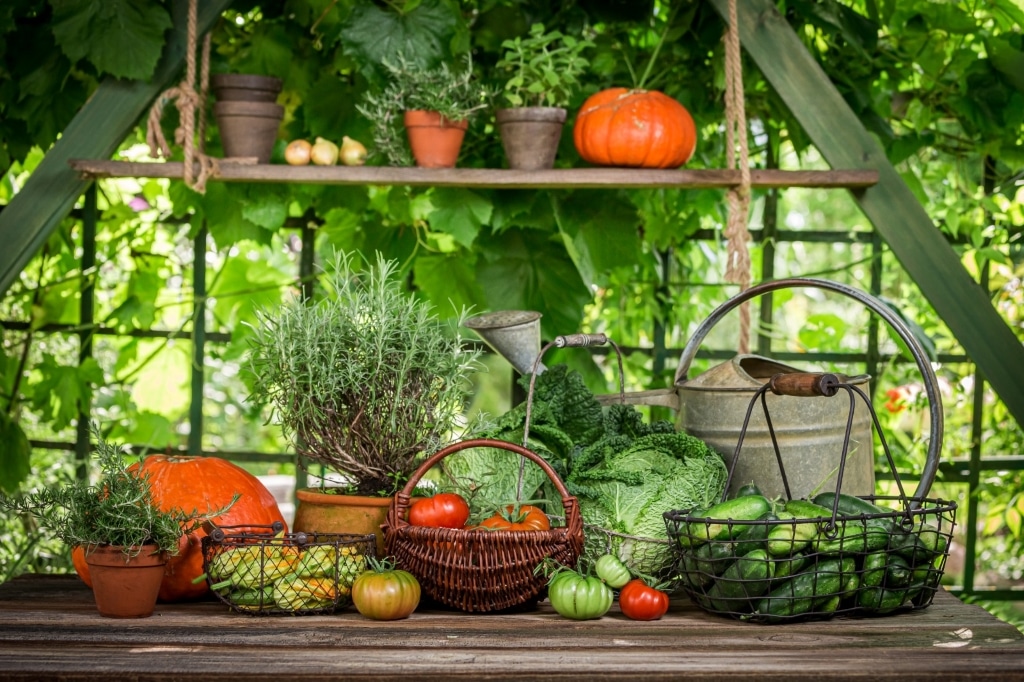
Living off the grid with no money may sound like a dream, but it’s actually a very achievable goal. It just takes a bit of planning and preparation. In this article, we’ll walk you through the steps for building a sustainable off-grid lifestyle.
We’ll also explain the 9 most important steps for living sustainably without breaking the bank.
Table of Contents
What is Living Off the Grid?
Let’s start with a definition of what it means to live off the grid:
Living off the grid means living a self-reliant lifestyle, where you are able to produce your own energy, heat, and water, and even grow some of your own food. Living off the grid also means living a lifestyle that is much less dependent on money.
You can’t just jump into sustainable living. You need to start your transition by getting prepared in advance. You’ll need to make a plan on how you’re going to start living off the grid and start preparing yourself.
To learn these techniques, you need to understand how to grow your own food, raise animals, collect rainwater, build a solar-powered energy system, and so much more.
These are some of the most important skills that you need to learn before you can start living completely off the grid.
What You Need to Live Off the Grid
While it is possible to live off the grid with no money, it does take some skill and planning.
First, if you plan to live off the grid, then you need to be sure you have the skills and equipment you will need to survive.
This includes having skills in basic survival skills such as fishing, hunting, growing food, building shelter, and fire starting. Then, you need to learn how to use your resources wisely and how to trade your skills for the resources you need.
Make sure you have the necessary licensing to hunt/fish. However, I recommend you ring up your local authorities to enquire about the state’s regulations and rules.
Living off the grid with little or no money
Living off the grid with no money means that you don’t have any money to buy anything. You do everything yourself, from gathering your own food to building your own shelter.
It’s not as hard as it sounds. With a little effort, you can make sure that you and your family are never without food, water, or shelter. Living off the grid with no money is one of the ways that people can live free and independent of the modern world.
The benefits of living off the grid are numerous, but they can be difficult to achieve if you don’t have a good plan in place. Fortunately, you don’t need a lot of money to live off the grid.
Here are 9 ways you can consider living a self-sufficient lifestyle:
1. Find a Free Piece of Land
It’s always a good idea to be aware of the many opportunities available out there. Right now there are many out-of-the-way towns and villages offering plots for free or for pretty low rates if you are willing to live there.
Depending on where you are located, there are states that offer contracts that allow you to live there but it comes with certain requirements. There are a couple of spots in Nebraska, Kansas, Lowa and Minnesota.
Land Contract
You can usually find details on them online, do check and read those land contracts carefully and take some time to consider if you are able to fulfill those requirements before signing the contract. Certain lands and states do not allow subdividing of properties so be sure to check them out before signing. On a land contract, you essentially have an agreement with the landowner directly, where you pay every month without bank or credit terms for a stipulated period of time. After the payoff period, you become the owner of the land.
Loans and Grants
Do also check out if you are eligible for grants or loans that USDA offers to assist you with making your first step to obtaining your land easier. For example, farm loans provide assistance to families that have difficulties in purchasing a farm. In return, they are to run a farm conforming to their standards.
2. Build a Shelter
If you are living off the grid without money, buying raw materials to build a shelter is not cheap. Why not build your homestead out of recycled wood or other natural materials? You can start by looking at construction sites or any organizations that discard unwanted materials.
There are many ways to do this, and you may have to experiment with different ways to find one that works well for you. The first thing you need to do is find a suitable location for your shelter.
If you are living in an area that is prone to earthquakes or other natural disasters, it is a good idea to build your shelter in a stable location. Once you have found a suitable location, the next step is to construct your shelter.
A good way to start this process is to build a small version of the shelter you want in a temporary location. You can use materials from around the house, including some of the items that you already own.
Some easy-to-build shelters may include:
-Yurts
-Cobs
-Trailer
-Tiny home
-Log cabin
-Tree house
Keep your options open and make sure that you consider all the options that you have before settling on one.
3. Produce Energy
Energy is one of the necessities of life. Producing biopower is a form of renewable energy produced from renewable resources. It is a very versatile power source because it is derived from organic materials that are already available. Biogas is an excellent source of fuel for off-grid, and it can be produced from a wide range of sources, including agricultural waste and municipal solid waste.
Anaerobic digestion is the process of breaking down organic materials such as food waste, manure, paper, wood, and yard waste into biogas, which is composed of carbon dioxide and methane, which is a gas that can be burned for heat and electricity. Unlike solar energy which requires a high initial investment to set up, biogas is cheap.
4. Harvest Your Own Water
When it comes to water, there are many ways to get your fill. You can collect rainwater from your roof or use a rain barrel to collect water from the downspouts.
And also DIY your own Water harvesting system is one of the best ways to save water and money. You can build your own rainwater collection system in your backyard or at the edge of your property.
There are many benefits to having your own rainwater collection system. It will save you money by reducing the amount of water you pay for water bills. This is especially important if you live in an area where there is no municipal water supply and the cost of water is high.
5. Grow Your Own Food

If you live in an area with a lot of sun and rain, you can grow your own food. There are many ways that you can grow your own food.
When you are gardening, you have the freedom to choose what you want to grow. You can grow vegetables, herbs and fruits.
For a start, I would recommend low-maintenance crops like peas, beans, spinach, carrots, tomatoes and lettuce. You can also grow a small garden of herbs like basil, oregano and thyme.
These crops will give you a lot of benefits without taking a lot of time and effort. You can grow them in pots, and even in containers!
However, it is important to plan the garden according to the season and the availability of natural resources. You can consider using peat moss, compost or any other organic material to grow your crops in a more fertile soil bed.
If you like to know more about harvesting your own food, do check out this post here.
6. Raise Your Own Livestock
If you live in an area where the weather is not too hot or cold, you can raise livestock. You can raise chickens, pigs, and more.
These animals are easy to care for. All you need to do is feed them and provide shelter. They will provide you with nutritious food that will help you get through the day.
Chickens are a great way to make your own food. They are easy to care for and require little effort. You can use them to make eggs, meat, and more.
7. Make Your Own Clothing & Furniture
You can also make your own clothes. You can use recycled materials like denim, plastic and wool to make your own clothing. You can use these materials to make everything from jeans to shirts and even jackets.
Using wood from your property or recycled material to make furniture. You can even use items that you have around the house. This is a great way to use items that you already own. You can make tables, chairs, beds, and other furniture.
8. Find A Job That Offers Lodging
If you are living off the grid and don’t have a job, you can start looking for a job that offers you lodging. This can be a great way to earn money and stay warm.
There are many companies that offer this type of job. You can search for these companies online or you can check out our post on: 18 Income Sources Ideas For Living Off-Grid.
Alternatively, you can work on a farm or campground, which includes free lodging for staff.
9. Source For Second Hand Equipment
Ask around if your friends and family have any used equipment that can be useful to you, there are items that you can use to build your own solar power system, water system and more.
You can look for second-hand items on sites like Craigslist and eBay. These sites are great for finding things like power tools, vehicles, furniture, and more.
It is best to check the items out before buying them. Make sure that you check the parts and make sure that the item is in good working order.
Final Note
All in all, living off the grid is a great way to live a simple life. You will be able to live a life that is more self-reliant and self-sustainable.
It is important to plan ahead to make sure that you are able to live off the grid. It is best to get started early, and you can use this guide to help you get started.
Hopefully, you will be able to find something that works for you and your situation.
What do you think about living off the grid? Do you have any other tips for people that are thinking about living off the grid? Leave a comment below!

